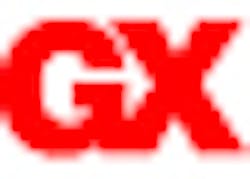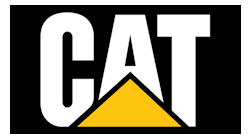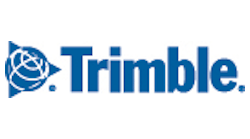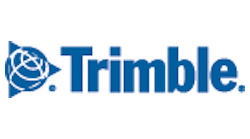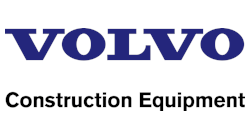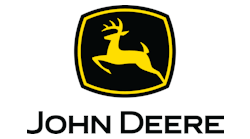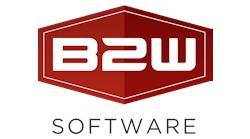Manufacturers and system providers of machine-control systems and productivity-enhancing tools are responding to what they acknowledge is a tough market in which budgets are tight by providing high-tech solutions at lower costs.
It’s a response to some contractors who are not investing in technology because of cash flow challenges and also to those who want to “test drive” entry-level technology before embracing more capable technological levels.
Scott Beathard, president of GeoShack North America, recently spoke with a highway contractor who indicated that, as a result of using machine control, his company has saved 43% on fuel costs, five to 20% on materials, and has eliminated two machines and all of the surveying.
“If you’re a serious grading and excavation contractor, you can’t afford to not have a machine-control system, regardless of the cost,” he says. “You can take a machine-control system and increase the productivity of that machine by 30% to 50% on a regular basis. I’ve got customers who will tell you that they’ve doubled in the productivity on that machine.”
On its website, www.geoshack.com, the company offers a chart that helps contractors determine the type of technology they need.
“They’ve got to make a decision if they want to go 2D or 3D. Small contractors can still use lasers and traditional 2D machine control, and it will still pay for itself,” Beathard says.
GeoShack’s machine-control business has managed to grow, even despite a bad economy, Beathard says.
“If a contractor gives us a chance to show through a demonstration or short-term rental what 3D can do for them, we can show them how they can make more money through that investment and how they can’t afford not to do it,” he says.
GeoShack offers technical support, upfront training, and annual support contracts.
In highlighting the benefits of excavator guidance systems, Hemisphere GPS has a seven-point plan for earthmoving contractors to increase their business. According to the company, advantages are not limited to large contractors, but small- to medium-sized contractors can increase their business with a single machine.
A 1D system provides simple depth gauge; a 2D system offers accurate bucket position relative to slope, and a 3D system presents accurate machine and bucket position guidance anywhere onsite.
Those benefits include:
- Eliminating job-site staking. A 2D system enables the operator to enter the depth, slope, or profile from the plan into the system, references the bucket or tool either on a control point or from a rotating laser, and then digs to grade. In a 3D system, the job control points are used to reference the plan design so a digital 3D plan can be entered into the guidance system. With both 2D and 3D systems, the operator digs and fills to grade with the aid of an in-cab touchscreen that displays the appropriate cut-and-fill numbers and the bucket position relative to the grade line.
- Minimizing manual grade checking. An excavator guidance system gives operators real-time in-cab feedback, showing them where they are relative to grade, when to keep taking and filling with a full bucket, and when to change to a scraper bucket. They can quickly check grade and slopes by placing the bucket or tool anywhere on the site. In a 3D system, they can record these positions as checkpoints in a job file and review the file at a later time in the cab or in the office to verify the job was done right.
- Eliminating rework and over-excavation. A 3D system records a progress map of the bucket or tool position.
- Minimizing the use of paper plans. In a 2D system, the operator enters the site information, such as depth, slope, or profile and digs according to the guidance system. When working a trench or consistent profile with a 2D system, the operator can reference the system at the beginning of the trench and dig to the extent of the excavator’s reach. In a 3D system, the operator loads the design surface from a USB flash drive, which displays all of the surface information on screen to be configured in a variety of ways.
- Improving bidding confidence-and potentially winning more bids.
- Completing more jobs between service intervals.
- Improving operator performance.
Eugene Bleau, an excavator operator for Prattco Excavating in Calgary, AB, used to be leery of machine control systems because he found them not to be user friendly.
Nearly three years ago, he “˜test drove’ a Hemisphere GPS 2D, one of the first companies in his area to do so. Now he’s “totally enamored” with it, he says.
Prattco has since deployed the Hemisphere GPS 2D in its residential basement excavating operations. Bleau also has used it for other jobs, such as digging a trench for drainage at a one percent slope.
“It’s great,” Bleau says. “Once I get set up, then I’m not getting out of the machine, running down the hole, seeking grade, and coming back out. The only time I have to get out is to get a measurement for my wall lines or something like that.”
Prior to that, Bleau would have to use a laser receiver on a stick to scratch down an inch at a time.
“You don’t want to go too deep on a residential basement, so depth is critical,” he says. “So you’d get in and out of the machine, trying to find your grade. It would take you 20 minutes. After that, it was a little easier to keep going because you had a reference point. But with this, you just enter in your cut and keep going until you come to that figure and away you go.”
Bleau runs the GPS on a 200D John Deere excavator.
“It makes my job much easier,” he says. “Once I get going, I keep going. There’s no downtime. What you would have to do in order to do it as quickly would be to have hired a person to stand there with a grade stick and shoot grade to do it with the same speed. You’d have an extra person there.”
Bleau says the learning curve took a few weeks to incorporate new habits.
“It’s just basic stuff-if you move the machine, you have to reset it again,” he says. “There’s a laser receiver on it, and that’s what we use for residential work. Every time you move your reference point, you have a static reference point that way by using a laser.”
Bleau says the Hemisphere GPS has worked “flawlessly” in the time he’s used it, even in cold Calgary winters.
“Winter gets awfully hard on everything on the machine, and we haven’t had any problem with the GPS,” he says.
Andre Roberge, Earthworks product manager and senior business analyst, calls Bleau “an example of a creative operator who took simple information to change the way he does his work. He’s now training other operators.”
Roberge says his company will work with end users to find the right solution and get them set up with the right capabilities that make sense for the type of jobs they take on.
Hemisphere GPS offers three different standard entry levels through its Earthworks line.
- Earthworks X100 is a 1D system which includes three-angle sensors and a color touchscreen terminal displaying the bucket teeth or tool position to within 2 centimeters. The operator sets the desired grade line in the terminal, references the bucket or tool and then digs or fills to grade based on the visual feedback from the terminal. Bucket or tool position relative to grade is displayed graphically along with a large numerical cut/fill readout.
- Earthworks X200 is a 2D system used for trenching, custom profiles, digging basements, blind cuts, single/dual slopes, and layering. The system ensures accurate grade control for nearly all types and sizes of excavators. When referenced to a known point, the Earthworks X200 works to accuracies of 2 centimeters to the bucket teeth. The information is displayed to the operator via a touch-screen terminal within the cab.
- Earthworks X300 is a machine-guidance grade-control system in which a digital terrain model (DTM) or digital site design of the project is uploaded into an inside-cab-mounted touch-screen computer and displayed to the operator. Precision tilt sensors on the boom, stick, and bucket determine the position of the relevant attachment. A GPS compass device provides precise heading as well as chassis pitch and roll. The inclusion of a GPS RTK rover smart antenna (with base station, if necessary) completes full 3D machine position capabilities. Full machine and attachment positioning is continuously measured and displayed on the computer independent of tracking the excavator with guidance of where to cut/fill relative to the DTM.
“There’s a big difference between anything less than 3D and 3D excavation,” says Roberge. “Three-D excavation involves tremendous data preparation and the leveraging of design files that go on the guidance system, whereas the X100 and X200 are 1D and 2D systems categorized as design onsite capabilities.
“Anything that is designed onsite before you get to 3D work processes and work flows, from a contractor’s perspective, can imply significant changes to how they run their business,” he adds.
The X100 has fewer sensors onboard than the X200 system, but both use the same terminal and same interface, allowing operators to get to work immediately to dig trenches, single slopes or flat planes by benching off of a single reference point, says Roberge.
Hemisphere GPS can be used on any type or size machine, Roberge says. The only challenge may come with a small machine that would not have the room upon which to mount a sensor, he adds.
“Anything with a seat and a cab is pretty much addressable,” Roberge says.
An entry level system will run about $10,000 to achieve initial functionality, Roberge says.
“We’re trying to manage that price threshold, so we do offer systems that are under $10,000,” he says, adding that the company has engineered guidance systems that have integrated sensors.
“If you can lessen the number of pieces, it’s often, on the whole, less expensive,” Roberge says. “It’s also less expensive and time-consuming for an operator to install it versus the dealer. It involves the initial understanding of function, installation, and a little bit of calibration, so the effort goes down, the time goes down, the complexity goes down, and the costs go down.”
Integrated sensors are within the category of scalable hardware, says Roberge.
“You can start with a smaller suite of sensors, then get more sophisticated with the amount of information that can be brought forth to the operator of the in-cab terminal,” he adds.
A contractor may not need a full 2D system, but perhaps something smaller that will offer full pitch and roll, plus heading, Roberge says.
“You can still get the same performance and guidance,” Roberge says. “They are really good for cutting trenches, so utility contractors can make very good use of a single one-dimensional system.”
Moving up to 3D is about being able to drive anywhere onsite and have the position of the machine and all of the sensors onboard to understand where the teeth are once the machine is positioned, Roberge points out.
“It’s inevitable that there will be a down-market push,” he says. “At the same time, we are seeing there is a certain understanding and comfort level that this sophisticated monitoring is making jobs quicker, more reliable, more safe-a lot of the standard value propositions of guidance as a whole. It goes back to the types of jobs that you are able to take on and making sure that each operator performs to the same level of productivity.”
As for training and support, Hemisphere GPS offers full user and quick reference guides to help operators get excavators functioning with the system immediately. There also are videos, and dealers provide in-person training. The factory provides training as well.
Hemisphere GPS constantly has an eye to how creative end users can be with the system once they’ve installed the base or additional levels of sophistication of information, Roberge says.
“We have a tremendous standard portfolio of applications that contractors can take on,” he says. “The creativity of the end users is immense, and we’re learning from them every day.”
A system with standard measurement elements that is easy to install, interpret, adopt, and utilize through a “very focused, human, machine interface” ensures not only that standard means of basic functionality is there, but also leaves plenty of room for the creativity of operators to do more, Roberge says.
EarthWorks OnDemand was developed by Trakware in response to industry needs for software that is needed only occasionally to reduce the costs per estimator, says Gregg LaPore, company president.
“We hear a lot: “˜We use your software, but only four or five times a year and when we need it, we really need it,” he says.
Created for excavators, EarthWorks OnDemand is an on-demand service akin to on-demand movie rentals and is available on a rental basis for a weekly, monthly, quarterly or yearly rate, starting at $77 for a week’s use.
“People may need it just for the bidding season, such as January through March,” LaPore says. “They could sign up for a quarter and then cancel for that time and just use it for that period. For the networked version, if they buy a single license, they can put it on an application server and then multiple estimators will have access to it and the cost per estimator becomes very low.”
Rather than being Web-based, EarthWorks OnDemand is downloaded and installed like any other Windows-based program, with the licensing information kept in the Cloud, so when the license runs out it can be renewed and then updated. Anyone in the world with an Internet connection on a Windows computer that is newer than Windows ME can rent EarthWorks with a credit card and be up and running within 15 minutes, LaPore says.
That’s the low end of the technology offered by Trakware; costs range from $77 a week to $197 a month, $497 a quarter, and $1,497 a year.
As for the company’s network license model, “If estimators only need it once a week or once a month, it’s hard to justify buying an excavation package for everybody who might use it occasionally,” says LaPore. “EarthWorks is installed on as many terminals as desired, and people can access the license if they have one license one at a time. It can be available to any number of estimators, but on a one-at-a-time basis without having to have 50 licenses.
“The other neat thing about it is it also works under Terminal Services RDP, which means people can log into an application service with a remote terminal anywhere in the world and access the software,” he adds.
One company, Weston Solutions, uses the software in offices worldwide from an application server in Kentucky, LaPore points out.
To help get excavation companies up to speed on the use of EarthWorks, the company offers free twice-weekly online training classes. Class recordings are available on the company’s website.
For EarthWorks OnDemand, there is unlimited e-mail support and phone support with a charge per incident. The network licensing system comes with a year of unlimited phone support.
The standard EarthWorks-the middle-of-the-line option with a hardware key-is sold for $4,000. The network version is $4,500. In those cases, it’s an outright purchase and it comes with a year of access to training classes and support, says LaPore.
Current economic times present challenges to be profitable in such a way that affects investment choices such as technology, says Randy Noland, vice president of business development and marketing for Carlson Software.
Technology costs include the initial expenditure, training, and cost of ownership, he points out.
“Whatever you invest, if it gives you a return on investment, it’s worth more than what you invested,” says Noland. “The challenge is the amount of investment when things are tight. That’s how we gauge the entry point.”
The production benefits of 3D machine control and the connected site are significant, so contractors should look at scalable entry points, he says.
Regarding 3D machine control, the most affordable entry point would be moving from traditional stakes and topography to a digital terrain model, Noland says, noting his company sells a lot of technology to surveyors.
“It reduces the amount of contract work for surveyors, which is expensive,” Noland says. “It is also more accurate and more productive.”
Carlson Software’s site supervisor systems are an affordable entry point to 3D machine control, Noland says.
While they vary in their configuration, they generally consist of an RTK GNSS receiver and a rugged field computer loaded with application software,
Noland adds.
“Prices can range from $13,000 to $18,000, with an additional $12,000 to $22,000 for a base station,” he says. “It’s a lower entry point than typical 3D machine control systems installed on excavators, dozers or graders that can cost from $35,000 to $75,000 per machine.”
Carlson’s most affordable entry point is Carlson Grade Supervisor, designed for site supervisors, inspectors, and grade checkers. The software works on a GPS pole or in a monitor vehicle, such as a pickup truck or ATV.
Carlson Grade Supervisor2.0 provides direct import of .dwg files, .dxf files, and machine-control files, including tn3, gc3, ln3, grd, tin, among others, giving supervisors daily, weekly, or other timed volumes, and the ability to track real-time cut-and-fill as well as collect and stake points. The software supports most all GPS/GNSS receivers and is Windows XP/Vista and Windows 7 compatible.
Noland says a company can get the field tablet with Grade Supervisor for less than $5,000. GPS and GNSS options can be added to maximize the investment.
Software interface is the same for all types of machines, such as graders and excavators.
“It”˜s a good, affordable entry point that also scales nicely so that whatever time you use to learn and operate your Grade Supervisor will reduce the amount of time it takes to implement on your machines, because the user interface is the same,” Noland says.
“The more you scale into this automation, the more accurate and productive it becomes and you get all of these glorious benefits that everybody always talks about with regard to machine control,” he adds.
Carlson Takeoff, an estimating and data prep package, enables users to perform a number of tasks, such as calculating site cut-and-fill and topsoil; differentiate strata volumes in rock versus dirt; asphalt quantity needed in a variety of measurement units; precise curb work calculations; trenching quantities; and roadway estimations from cross-sections.
Once a company is awarded a bid, Takeoff is used to analyze existing topography before starting; to prepare design information for exact staking; to create a 3D model for machine control; to evaluate for quantity and quality control; and to report volumes as building goes on.
While Takeoff is a premium package, Carlson Construction allows a contractor those benefits without the excavation module for nearly half the price.
“That creates a nice entry point for building the data that go into the machines for creating the machine control,” Noland says. “That’s the affordable part of it. You are looking at entry points that are scalable into more automation.”
The type of machine doesn’t matter, Noland says.
“If I had a small skid-steer and I just wanted track elevation grade so that I’m building my slopes pretty close, I could put a Grade Supervisor package on it and have a machine-control system for under $15,000,” he says. “It doesn’t have slope and it doesn’t have a lot of the other things, but I can use it on smaller machines.”
In upgrading to 3D positioning and machine control, a contractor can yield faster and more accurate results for all aspects of earthmoving, yielding tighter bids, fast job cycles, and improved profit margins, Noland says.
Cost savings are derived through a focused interface with respect to cut-and-fill, simple slopes, elevation checks, and line offset, he says.
Further savings are derived through bid verification with the data accepted as sufficiently accurate for estimating,
he adds.
Tighter bids avoid errors and serve as an insurance policy of sorts, Noland says. The system also can help check grades for other machines.
Noland says most supervisor systems work in a manner similar to machine-control systems, creating a comfort level and a business case for adding a dozer or grader system. A base system purchased in conjunction with a supervisor system can broadcast corrections to an unlimited number of machines without having to repeat the cost.
Liz Quinn, John Deere product marketing manager, says “the most exciting news from John Deere that we believe will accelerate adoption of productivity tools is that we provide our JDLink Ultimate machine monitoring system with three years of service in base on nearly all of our new machines.
“John Deere owners can step into our premium telematics system right away with no additional cost,” she adds. “For owners of existing machinery, including other brands, we offer JDLink Select as lower-cost solution.”
JDLink Select is an all-makes, all-models telematics solution compatible with any 12- or 24-V power source. Machine information is collected and sent wirelessly to the Internet, where it can be accessed by the user through an Internet-connected computer.
JDLink Select is a basic package capable of managing machine hours and location, maintenance profiles, geofencing and curfew alerts. JDLink Ultimate is an advanced fleet management solution that offers users a wider range of management tools. JDLink Ultimate contains all of the features of JDLink Select, plus fuel-burn information, machine readings and reports, machine utilization, and machine diagnostics. There is a JDLink system for any machine with a 12-volt battery, Quinn says.
For those who upgrade from entry level, the top-of-the-line experience is JDLink Ultimate since it captures more comprehensive data through the machine’s CAN-bus system, she says.
Purchasers of new machines with JDLink Ultimate in base see no costs for three years. After that, there is an annual $600 subscription fee. JDLink Select is $300. For existing machines, JDLink Ultimate hardware is $3,100 and Select is $1,300.
End users are reporting that John Deere’s new Web user interface site is “much more user friendly, with both dashboard and drag-and-drop functionality, plus the ability to easily export reports as CSV or PDF files,” notes Quinn.
Quinn says while JDLink users are able to teach themselves in many cases, the company also offers a dedicated, John Deere-staffed call center. The company also can open Web-based training to customers upon request.
For those unable or unwilling to make an investment in a telematics system, they can experience it through the rental market, Quinn says.
And while it is possible for the telematics system to be imported from one machine to another, “it is not recommended due to the time required to make the switch,” Quinn notes.
Caterpillar offers entry-level 2D, AccuGrade solutions for customers just starting to use grade control technology or who are interested in trying out the systems in their application before taking the leap to 3D GPS systems, says John Thomas, a supervisor of connected worksite sales and distribution for Caterpillar.
The 2D AccuGrade solutions include sensor technologies with cross-slope, sonics, and lasers. These systems are available on Cat motorgraders, track-type tractors, and excavators.
Additionally, Cat has a new family of products called Cat Grade Control. The products are available on select Cat motorgraders, track-type tractors, wheel-tractor scrapers, and excavators.
“For customers interested in a lower-cost, entry-level introduction to grade-control technologies, our Cat Grade Control systems for our M2 motorgraders and E-series excavators would be a great fit,” says Thomas.
The systems are available at a lower cost due to the use of integrated, existing machine displays instead of additional grade-control displays, cost benefits of factory installation and calibration, and systems based on entry level 2D technologies that are typically lower cost than 3D solutions, he adds.
“These 2D Cat Grade Control systems are factory-integrated systems ready to work without any dealer installation or calibration needed,” Thomas says. “Even though these systems are available at a lower cost than the comparable AccuGrade dealer-installed systems, there has not been any sacrifice in performance, and in most cases performance has been improved.’
The systems also include the Cat AccuGrade Ready Option (ARO), allowing customers to upgrade from entry-level solutions to other 2D technologies like sonics or lasers up to 3D solutions like GPS and UTS.
“Upgrading these systems does not require throwing away any sensors,” says Thomas. “The customer only needs to pay for the additional sensors or displays needed. This allows them to test the waters of grade control at a lower cost, while enabling them to upgrade their machine control without wasting their money on parts that they won’t need later.”
For Cat’s M2 motorgraders, the Cat Grade Control Cross Slope system uses the existing machine display for the grade-control system, reducing the system cost by several thousand dollars by reducing the need for a separate machine-control display.
Cat Cross Slope automatically controls one side of the moldboard, maintaining the operator-selected cross-slope percentage as the operator manually controls the other side of the moldboard.
For E-series excavators, the Cat Grade Control Depth & Slope system provides real-time guidance to the operator working to dig to a specified depth or slope.
The system displays the position and orientation of the bucket and teeth in reference to the design grade on the in-cab display, allowing the operator to work toward a target grade accurately and quickly without the need for grade checkers.
“This system is available to customers at a cost savings of several thousand dollars compared with our dealer-installed AccuGrade systems for excavators, as it utilizes the standard machine display to provide operator guidance without the need for an additional grade control display,” says Thomas.
“Further, the Cat Depth & Slope system utilizes position-sensing hydraulic cylinders and boom/stick pin-mounted rotation sensors to provide this real-time bucket position in lieu of the typical machine control sensors that can often be damaged during excavator operations,” he says. “These integrated sensors are better protected and more responsive than their aftermarket counterparts, providing customers a more rugged, reliable, and responsive solution for excavator work in harsh materials and even in underwater applications.”
Cat Dealers are providing support and training for the systems.
Topcon’s product portfolio always had offerings at the low end of the price spectrum, as well as the high end, says Tony Vanneman, Topcon’s construction products marketing manager.
“A lot of companies start off with a GPS base station and a survey rover and add to as their needs or finances allow with machine rovers, for example,” he says. “That can minimize their investment and add to it as time goes by.”
Two-D machine control for grading and excavating remains a large part of Topcon’s product line, says Vanneman.
“Those products are the foundation that the GPS and 3D parts are built upon. Contractors can still utilize 2D products, and then we have a very logical upgrade path to go from a 2D machine-control system to a 3D machine-control solution.
“We help protect the contractors’ investment by enabling them to utilize the onboard sensors on a motor grader, for example. You can still use the hydraulics and all of the core sensors going from 2D to 3D.”
As such, Topcon offers “upward compatibility and backward compatibility,” says Vanneman. “You can go from a 2D to a 3D and flip flop back and forth.”
Portability is another benefit, Vanneman says.
“A contractor has the ability to take that system off of a motor grader and in a few minutes put it on a dozer, then take it off a dozer and put it on an excavator and move them back and forth,” he adds.
The initial installation calibration of the machine would take the most amount of time, but once that is done, it only takes a few minutes to move the system from machine to machine, Vanneman says.
There are no restrictions as to the type of machines on which the system may be used, although the vast majority of the machines equipped with the 2D and 3D machine control are conventional-size machines, he notes.
An investment can be as low as $15,000 and go to $100,000, depending on the chosen options, Vanneman says.
Vanneman says in the 30 years he’s been in the business, the performance characteristics return on investment is much higher and faster with 3D GPS machine control than he’s ever seen.
Productivity in being able to get a job done in half the time it would take conventionally is one of the benefits, he says.
A second is being able to reduce surveying costs as high as by 90%.
“There are going to be some stakes and benchmarks utilized, but that’s a huge savings right there,” Vanneman says.
Another benefit is savings in materials.
“Whether they’re doing subgrade or spreading rock, anytime a contractor can control that material spec in their favor, they’re going to make more money,” Vanneman says. “They move less material to get within that specification.”
An additional benefit is making fewer passes on a grading site to get to grade.
“You are putting way less wear and tear on your machine and burning less fuel, which is a big cost savings, and you’re also creating fewer emissions,” Vanneman says. “We’re all under pressure or being aware of not creating pollution.”
Acknowledging that it requires a different skill set to operate machine control, Vanneman says training is essential today more than ever because the products have become increasingly sophisticated over the years.
“There is a lot more software integration,” he says. “We’re talking about utilizing satellites in space with receivers on the machines. Even though what makes the parts work is more technical, utilizing it has never been more simple because basically these systems show the operator where they are, show them visually what to do and of course when the hydraulics are taken over and the automatic’s engaged, now all they are doing in essence is steering the machine. That has made the operator’s job significantly easier.”
The Trimble Flex family is a new category of machine control solutions introduced at ConExpo 2011.
“These systems are designed to meet the needs and budgets of owner operators and small to mid-size contractors involved in a range of earthmoving and compaction work,” says Jeff Drake, Trimble Grade Control Solutions segment manager. “The systems are also ideal for contractors looking for an affordable option for the deployment of many systems across large fleets. The rugged Flex family systems are easy to install, learn and use.”
They include the GCSFlex and the CCSFlex.
The GCSFlex is for small to mid-size (11- to 29-ton) excavation contractors and offers a reliable, flexible, and affordable option to leverage machine control technology and make contractors more competitive, says Drake.
The system can be used for a broad range of work, including trenching for underground utilities and pipelines; digging footers and basements; site prep on residential, commercial, and industrial job sites; road building and maintenance, and embankments and slope work.
Drake says the cost of the GCSFlex system is less than $10,000.
“The Trimble GCSFlex system is highly flexible with standard sensor options that allow the contractor to easily use the system for a variety of job-site tasks,” says Drake. “Contractors can start with the low cost ‘system in a case’ solution and add additional sensors for increased system capabilities as their needs change.”
Installation can be done by the contractor and typically takes about two hours, allowing the contractor to be up and running with the system very quickly, he adds.
“With a fast install time and no welding or drilling, the system is ideal for non-permanent installation on rental machines,” Drake says. “The system leverages the same rugged components used as a part of the field-proven Trimble GCS900 Grade Control System—the system comes standard with a laser catcher which also doubles as an angle sensor, reducing the number of system components and allowing the contractor the flexibility to take advantage of a laser transmitter to be used as a height reference over a larger area of the job site.”
A dual-axis machine body sensor is also included with the GCSFlex system as standard and is meant to increase the digging accuracy of the system and prevent over- or undercutting, allowing the contractor to perform with higher accuracy and higher-quality excavation on projects, Drake says.
Drake says GCSFlex targets the fundamental excavation tasks contractors perform with excavators.
“The system can be configured to dig to a depth or a depth and slope or a profile of the target surface above or below a point of reference,” he says. “The operator uses the simple user interface to quickly enter, store, and edit if necessary, an unlimited number of target depth, slope, and profile surfaces.”
GCSFlex can use the laser catcher included with the system with a laser transmitter to extend the height reference in and around the project area, allowing for more flexibility to excavate multiple target surfaces using a single height reference on the job site.
Adding the new Trimble HS410 heading sensor to the GCSFlex standard system configuration enables the contractor to dig to a sloped surface that slopes in multiple directions.
“This allows the operator the flexibility to rotate the machine in the work area and still maintain high accuracy and productivity when working on more complex sloped surfaces,” says Drake.
The CCSFlex Compaction Control System for soil and asphalt compactors is designed to offer both asphalt and earthmoving contractors an easy-to-use and affordable system for pass count and coverage mapping, Drake says.
“The system is designed for compaction applications where pass count and uniform compaction coverage must be achieved most efficiently,” he adds. Such locations include highways; roads, road building and improvement; runways; commercial, industrial, and residential site prep, and trending and back-filling.
The CCSFlex system costs $11,995.
“Using the CCSFlex to record and display pass count information, contractors can more efficiently compact, increasing production while maintaining a uniform area of compaction coverage and quality of each layer,” says Drake.
Pass count information and total area compacted is displayed graphically on the bright, sunlight-readable CB450 control box.
“By increasing compaction efficiency, contractors can complete work faster, limit fuel consumption and reduce operating costs,” says Drake. “Additionally, pass count and compaction coverage information is easily printed in the field using a mobile printer or exported to a simple text file to provide compaction documentation to site management and local government agencies.”
Contractors can start with the low-cost “system in a case” solution.
The case includes the system electronics, sensors, installation components and documentation, and additional sensors for increased system capabilities as needs change. Add-on sensor options expand the system functionality to provide Compaction Meter Values for soil compaction and temperature mapping for asphalt compaction.
CCSFlex Compaction Control System also can be done by the contractor in two hours, says Drake.
“With a fast install time, no welding or drilling, the system is ideal for non-permanent installation on rental machines,” he says. “The system leverages the same rugged components that are used as a part of the field-proven Trimble CCS900 Compaction Control System.”
Both systems are designed to be easy to install, learn and use, Drake says. They are available through Trimble’s Sitech Technology Dealer channel and other Trimble heavy and highway dealers “who can advise contractors on the appropriate construction technology solutions to utilize, and can provide high-quality local customer service, personalized training, and technical support,” says Drake.
For tight-budget solutions, MOBA Mobile Automation AG designs, sells and supports systems capable of automating more than one machine.
This gives customers under tight budgets the justification to not cut corners by purchasing a system that is not portable strictly on price, says Christine Seidel, manager of marketing communications and technical documentation for MOBA.
The laser-assisted control system MOBA Laser-matic is a portable and flexible leveling system that can be used for applications on various machines.
“With the MOBA Laser-matic installed on pan scrapers, tow graders and box-blades, an exact manual or automatic height adjustment can be achieved,” says Bernhard Marx, product manager for earthmoving and compaction.
“In cases when height as well as grade matter, the MOBA Dual-Laser-matic is equipped with two laser systems and can be used for road-building projects like dirt roads or country and forest roads,” says Marx. “The system’s high usability and operational reliability offers exact performance for versatile applications on different machines.”
The system can be used for leveling work in the building and construction industries, among other applications.
“With the MOBA leveling system, contractors can achieve precise leveling results, and corrective works are not necessary,” says Marx. “When the work is done properly from the beginning, this means a savings in time, fuel, and money. The working efficiency rises and optimized work flows contribute to an economic machine employment.”
Marx says there is one controller for manifold projects.
“The system works with the MOBA Laser-Receiver LS-3000, which receives the height references of a stationary laser transmitter,” he says. “The digital controller carries out the accurate hydraulic control or topographic measurement. The controller can save up to 10 hydraulic configurations. This means saving time as well as money, as the controller can be used in various machines without additional calibration. Various settings guarantee an optimal adjustment to each machine. However, the controller is easy to use with only four keys.”
With the CAN-based technology, the system is also prepared for future extensions: sensors can be exchanged or refitted easily at any time, notes Marx.
Leica Geosystem’s entry level products range from PowerBlade single-laser grading systems and PowerDigger Lite excavator systems to PowerGrade and PowerDigger 2D systems.
The systems provide a wide range of indicate and basic control systems, notes Rich Calvird, Leica’s TSS operations manager.
“These systems target a wide variety of machines and implements for grading and excavating,” Calvird says. “For grading, PowerBlade provides single-laser control over box blades, scrapers, skid-steer blade attachments, and small dozers. PowerGrade 2D provides dual height or height plus slope control with a range of laser, sonic, and slope sensor choices for every machine and budget.
“For excavating, Leica offers PowerDigger Lite, targeting the backhoe and mini-excavator market with economical digging depth indication, and PowerDigger 2D for any size excavator with precision depth indication across all types of ground slope and dual slope applications.”
PowerBlade systems start under $5,000; PowerDigger Lite under $8,000; PowerDigger 2D under $15,000 and PowerGrade 2D costs range from $14,000 to $19,000.
“All of these systems provide productivity increases of 20% to 50% or more, depending on the machine and application,” says Calvird, noting that the systems have been well received in the market with steadily increasing sales since their introductions in 2008 and 2009.
The systems are simple and intuitive in nature, with few training and support issues, Calvird says.
“What issues do come up are mostly related to the more advanced capabilities these new products offer over earlier and competing products,” he adds.
Greg Rostberg, marketing manager for the Bobcat Co., says contractors can purchase a laser grading system starting at about $10,000.
“To many contractors, this would be very cost-effective, considering you can have that much savings in one pour,” he says. “Bobcat also has a $700 CR600 laser magnet receiver that snaps onto any machine Bobcat makes and can give the customer a very close estimate to the grade.”
Michael Ardiff, equipment manager for Pittman Construction in Conyers, GA, says his company has always had a remote fleet-monitoring system that came with the company’s Komatsu’s machinery, but never used it until recently.
Once the workers for the road construction company learned how to use it, they also realized that through the equipment, they were able to drop the idle time from 65% down to a low 30% idle.
“We‘ve saved quite a bit in fuel,” Ardiff says, adding that some of the bigger pieces of machinery can burn up to 8 gallons in an hour. “It’s very handy in letting you know when a piece of machinery is coming up for service. It’s very user friendly.”
Komtrax, Komatsu’s remote fleet-monitoring system, comes standard on the full line of Komatsu America’s construction and mining product lines, says Ken Calvert, director of product support systems for Komatsu America Corp., adding that the system can help contractors manage their work more effectively.
The Komtrax system is installed in nearly all new Komatsu construction equipment, including excavators, crawler dozers, wheel loaders, articulated dump trucks, smaller dump trucks, and motor graders.
“Komtrax was designed to give owners the information they need to make strategic business decisions about their machines and their operations,” says Calvert. “The payoff is increased productivity and machine availability, as well as smarter management.”
Komtrax is Web-based. “It provides a wealth of information in a user-friendly format,” says Calvert. “The system also allows owners to enter and assign their own equipment numbers, job sites, operators, machine specific notes and more.”
Komtrax provides owners with detailed information in daily, monthly, and annual summaries or reports about basic and more advanced aspects of machine performance.
The system also allows owners to enter and assign their own equipment numbers, job sites, operators, and machine-specific notes, among other factors.
“A variety of charts, maps, and graphs, as well as useful search and filter parameters, make it convenient for owners to find what they need quickly and easily,” says Calvert. “They can search for information about specific machines based on key factors such as utilization rates, age, various notification messages and more.”
New Komtrax features include the ability to monitor the condition of the diesel particulate filter remotely and expanded functions that improve the availability of efficiency information, including work modes, fuel burn, and carbon footprint.
Data can also be provided for custom office applications or downloaded directly into spreadsheet applications.
“Additionally, access and viewing rights can be controlled so that the owner can make sure that the right people see the right information,” says Calvert. “Komtrax relays basic as well as critical performance data from the machine to the owners’ computer and also to the local distributor who’s readily available for expert analysis and feedback.”
Using this information, distributors can align manpower, processes, and inventories to best support customers’ parts, maintenance and service needs.
With accurate and timely information, distributors have improved their response time, which in turn, has lowered owners’ costs and downtime, Calvert says.
“For example, machine cautions are transmitted to owners and to authorized distributor technicians so that the latter can troubleshoot the machine even before arriving at the job site,” Calvert adds.
“The upside is that distributors can provide a higher level of support by reducing travel expense and ensuring a prepared mechanic arrives at the site, which ultimately reduces the owner’s expense and unscheduled downtime.” Machine operation monitoring can also facilitate proper maintenance scheduling and help identify potential problems before failure occurs, he adds.
Since Komatsu America first introduced Komtrax in 2006, the company has received “incredibly positive feedback” from its customers, Calvert says.
“The fourth generation of Komatsu’s Komtrax technology, Komtrax 4.0, is now available on all Tier 4 Interim machines,” he says.
“We see Komtrax as a distinct advantage for owners. The data that Komtrax provides put key information at their fingertips of owners. That wealth of information, in conjunction with the distributor support for maintenance and repair, has increased owners’ uptime and helped strengthen their bottom line by running their machines ‘smarter’.”
Calvert says there has been “almost a perfect storm” for the use of telematics with fleet owners. As more manufacturers are making telematics systems standard equipment, fleet owners are reaching “telematics” critical mass each time they purchase a new piece of equipment, he says.
“As the benefits of using the information find their way to company’s bottom lines, owners are making decisions to retrofit owner equipment with telematics and build automated systems for importing key machine data into their accounting systems,” he says.
“All Komatsu dealers have a Komtrax expert on staff that can help customers with the first steps of logging on to the more advanced planning necessary to full fleet integration.”
